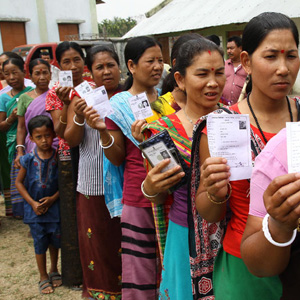In this context, general elections 2014 were proved to be historic. 66.44 percent voters comprising of 554.1 million people have accessed their franchise to vote. Prior to this, the highest turnout was recorded as 64.02 percent in 1984. Not only this, the gender gap between the male and female turnout was reduced by 1.55 percentage points in Lok Sabha elections 2014. 16 States and UTs recorded a higher women turnout. To add to the glory, women voters surpassed men for the first time ever in any Lok Sabha elections in nine States or Union Territories. The credit for achieving such figures lies with the efforts of Election Commission of India. No doubt engaging with and motivating such a large and diverse population to cast their vote was a gigantic task with myriad range of complexities and challenges.
Election Commission of India adopted Systematic Voters’ Education and Electoral Participation (SVEEP) programme to increase voters’ turnout both in terms of quality and quantity. SVEEEP formulates policies, lays down the framework, plans interventions and monitors implementation besides carrying out continuous interaction with voting publis, civil society groups and media. They broadly include situation analysis; systematic planning and implementation of targeted interventions (on IMF model) based on the situation analysis, mid programme review and monitoring and end term review. The communication interventions include multi-media and inter-personal communication, physical events and innovative activities for mobilization of people/community and voter Facilitation.
It took a lot of convincing on part of civil societies and NGOs in sensitising people to exercise their valuable right. Several campaigns were launched to encourage masses especially the young generation, women and transgenders for leading them to polling booths. . They acted as a catalyst to spread voter education. It was due to combined efforts of NGOs, Civil Societies, Election Commission of India, etc that India is touching new heights of voters’ turnout.
Free and fair elections are the life force of democracy. Credible elections at stipulated intervals have ever since enabled India’s peaceful transformative journey for inclusion and empowerment of common citizen. The justification of election as a key anchor of democracy comes from the fact that it translates the idea of people’s power to a physical reality. This can effectively happen only when people are able to exercise such power through informed participation.

















Related Items
Why democracy breathes only in diversity…!
From Editor to Salesman: Vanishing soul of journalism…
Pahalgam Massacre was a calculated assault on the soul of India…